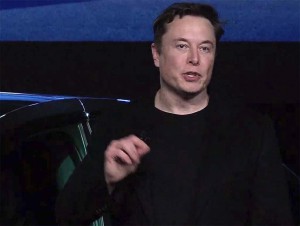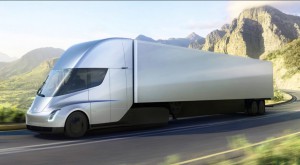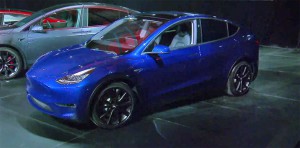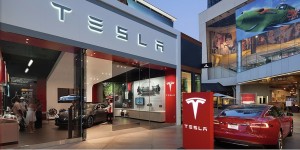
Tesla CEO Elon Musk said delivering Model 3s to Europe was a logistical challenge unlike anything he'd seen before.
(This story has been updated with new information from the Q&A session during the company’s earnings call.)
Tesla posted a $522 million operating loss on revenue of $3.7 billion during the first quarter of 2019. The loss came despite a 3% increase in Model 3 production, accounting for about 63,000 vehicles.
This improvement in production rate was modest mainly due to changes to the production process for the introduction of new variants of Model 3, fewer working days and a supplier limitation, the automaker noted.
CEO Elon Musk noted that the company struggled with a massive increase in the delivery of Model 3 sedans to Europe. In fact, the completed half of the deliveries during the last 10 days of the quarter, he noted during the earnings call.
“Of all the problems, this was a good one to have,” he said. “It was one of the most difficult logistics problems I’ve ever seen, and I’ve seen some good ones.”
(Tesla boosting Model 3 ranges, performance. Click Here for the story.)
As a result, the company plans to “regionally balance vehicles builds through the quarter.” The slow rate of deliveries pushed many of them into the second quarter. While Model 3 production jumped, profit margins on the sedan fell slightly. Additionally, Model S and X deliveries dropped to just over 12,000 units, which is about half of the company’s rate from the past two year’s Q1 results.
Tesla officials noted they expected to lose money in the second quarter before returning to profitability once again during Q3. “We feel comfortable returning to profitability” in the third quarter, Zachary said during the call. The company is looking for ways to drum up business.
Just recently it began offering leases its new Model 3 sedan, and Musk noted during the call that returning Tesla buyers would get a free upgrade to Ludicrous mode on their purchase. He also noted that sales will start to pick up. “We’re starting to see overall demand return to normal in Q2,” Musk said.
To help drive sales, Tesla plans to open more stores “where it makes sense,” and close some locations where “foot traffic is low,” said Musk, reiterating a correction the company issued several weeks ago when he announced almost all stores would close by the end of this year.
Tesla ended the quarter with $2.2 billion of cash and cash equivalents, a $1.5 billion reduction from the end of 2018. The drop came as a result of a $920 million convertible bond repayment and an increase in the number of vehicles in transit to customers at the end of Q1.
Musk was pressed by one analyst during the call about the advantages of being a private company rather than a public one — seen as a taboo topic by some as it was this concept that got Tesla and Musk fined $40 million by the Securities and Exchange Commission in a tussle the two sides are still sorting out today. Musk sidestepped any problems by stating the obvious.

However, Tesla officials are not close to selection a production site for the semi, which is expected to go into production next year.
“I would prefer us to be private,” Musk said, noting that being public creates “a little bit of distraction.”
(Click Here for more about Tesla investors worrying ahead of Q1 earnings call.)
The company is still trying to determine if the new Model Y will be built in California or Nevada, a decision expected next month. However, Musk said semi truck production, slated to begin next year, hasn’t found a home yet.
The company was looking for ways to tighten its belt, officials noted suggesting, “we successfully enacted a number of cost reductions” that could net profits down the road. While acknowledging now may be an appropriate time to return to the capital markets, Musk appears content to eschew pursuing additional funding.
“It may be good (for us) to be on the spartan diet for now,” he said.
Battery production from Gigafactory is high enough that they will begin shifting. A bigger and bigger portion of Tesla’s business over time,” he said. He was less optimistic about the company’s solar roof tile business.
He said semi production will begin next year, but the site hasn’t been determined. Conversely, Model Y production will be in either California or Nevada, a decision coming next quarter.
Gigafactory Shanghai will be almost fully funded through local debt. Thus far, Tesla has secured a $522 million (as at March 31, 2019) credit line from local banks. The company’s capital expenditures were $280 million in Q1 including early investments for Gigafactory Shanghai.
The EV maker reaffirmed its prior guidance of 360,000 to 400,000 vehicle deliveries in 2019, which represents an increase of approximately 45% to 65% compared to 2018. If the Shanghai factory is able to reach volume production early in Q4 this year, the company may be able to produce as many as 500,000 vehicles globally in 2019.
(To see more about Tesla’s plans to announce a fully autonomous vehicle, Click Here.)
“This is an aggressive schedule, but it is what we are targeting. However, based on what we know today, being able to produce over 500,000 vehicles globally in the 12-month period ending June 30, 2020 does appear very likely,” officials noted in a statement, which was supported by Musk, who contended the “Shanghai program is going very well. He said he expected the plant to be producing 1,ooo to 2,000 vehicles per week “if not by the end of the year, then shortly thereafter.”
Paul A. Eisenstein contributed to this story.


